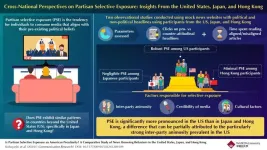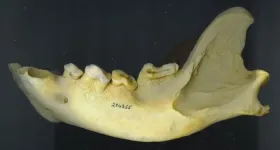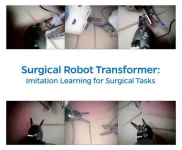Heat stroke is primarily classified into exertional and non-exertional forms. Exertional heat stroke results from strenuous physical activity in high heat, while non-exertional heat stroke typically affects those exposed to extreme heat without engaging in significant physical exertion. Symptoms include elevated body temperature, impaired consciousness, headaches, muscle spasms, and, in severe cases, cardiovascular overload, cerebral hypoxia, and organ failure. Western medicine’s primary treatments include cooling methods, rehydration, and pharmacological interventions like dexamethasone and diazepam to address cerebral edema and convulsions. However, these methods sometimes lead to side effects such as excessive sweating, nausea, and gastrointestinal issues.
In TCM, heat stroke falls under “Yang summerheat syndrome,” a condition associated with the pathogenic “fire-heat” energy that disrupts the body’s natural balance. Bloodletting therapy, practiced for centuries in TCM, involves releasing small amounts of blood from specific acupoints to alleviate heat, improve circulation, and release pathogenic factors trapped within the body. This review evaluates bloodletting techniques and their efficacy in treating heat stroke, offering insights for modern clinical application.
Bloodletting by Acupuncture at EX-UE11
EX-UE11, known as one of the extra points in acupuncture, is located at the fingertips and is pivotal in TCM for harmonizing the body’s Yin and Yang energies. Bloodletting at this point is performed by piercing the fingertips with a three-edged needle to release two or three drops of blood, which is thought to alleviate excess internal heat. This technique improves circulation, promotes heat dissipation, and, from a Western perspective, stimulates pain receptors that can activate the body’s central thermoregulation system. By enhancing blood flow and reducing inflammation, this method facilitates the body’s natural cooling process and aids in preventing heat-related organ dysfunction.
Ear-Tip Puncture and Bloodletting Therapy
The ear-tip point, located at the apex of the ear, is significant in TCM for “purging fire,” especially for conditions where heat ascends to the head, leading to symptoms like high fever and fainting. Ear-tip puncture involves pricking the ear’s tip to release blood, which starts as darkened and purplish, a TCM indication of trapped heat. The therapy not only directly removes heat but also clears the meridians, promotes detoxification, and helps restore consciousness in patients suffering from severe heat stroke symptoms. Studies highlight that ear-tip bloodletting can stimulate nerve endings, which may help reduce hyperthermic effects and alleviate convulsions, making it an effective emergency response method with minimal discomfort.
Well Point Puncture and Bloodletting Therapy
The well points, located at the extremities of fingers and toes, are Shu acupoints essential in TCM for managing febrile conditions. Bloodletting therapy at well points is thought to promote microcirculation and peripheral blood flow, effectively redirecting the body’s heat outward and enhancing the brain’s oxygen supply, which is vital for preventing heat-induced ischemic damage. The well points at the fingertips, in particular, allow for targeted intervention to cool the body and relieve symptoms like dizziness, high fever, and mental disorientation. Clinical reports suggest that well-point puncture can provide both rapid relief and sustained temperature control, emphasizing its utility in emergency settings.
Cupping and Bloodletting at GV14
GV14, situated at the back of the neck, is an intersection of Yang meridians and a key acupoint for managing excess heat in the upper body. Cupping combined with bloodletting at this point is an ancient TCM practice, believed to release pathogenic factors by creating an outlet for trapped heat. The procedure involves piercing the GV14 point with a three-edged needle, followed by fire cupping, which uses heat and suction to draw out stagnant blood. The cupping procedure improves blood circulation, reduces inflammation, and accelerates metabolic waste removal. Reports on this therapy show that it is highly effective in cooling the body, with a clinical efficacy rate reaching 98% for reducing fever. However, it requires further research to confirm its underlying mechanisms and long-term safety.
Precautions and Contraindications
Bloodletting therapy, while beneficial for excess-heat conditions, has specific contraindications. Patients with significant cardiovascular, hepatic, renal, or coagulation disorders, those with severe skin infections, and vulnerable populations such as children, pregnant women, and the elderly should generally avoid bloodletting. It is also crucial to prevent infection through stringent sterilization and to use disposable equipment. Practitioners must monitor for potential adverse effects, such as excessive bleeding or dizziness, and avoid repeated punctures at the same location to reduce tissue damage and inflammation.
Future Directions
Although bloodletting has shown efficacy in managing heat stroke, modern studies exploring its mechanisms are limited. Research should focus on understanding how bloodletting influences systemic and peripheral microcirculation, nerve regulation, and immune responses. Additionally, randomized controlled trials and clinical studies could help standardize bloodletting techniques and safety protocols. Such research would bridge TCM practices with evidence-based medicine, offering a broader therapeutic scope for heat stroke management.
Conclusions
Bloodletting therapy, an ancient TCM practice, holds potential as an effective, accessible, and minimally invasive treatment for heat stroke. By regulating body heat, improving microcirculation, and promoting detoxification, it provides a complementary approach to conventional treatments. Despite the promising outcomes observed in TCM settings, rigorous scientific investigations are necessary to establish clear clinical guidelines and optimize bloodletting for heat stroke treatment. Integrating this therapy within modern healthcare could improve outcomes for patients in regions where heat stroke is a growing concern, offering an alternative solution rooted in traditional wisdom.
Full text:
https://www.xiahepublishing.com/2835-6357/FIM-2023-00088S
The study was recently published in the Future Integrative Medicine.
Future Integrative Medicine (FIM) publishes both basic and clinical research, including but not limited to randomized controlled trials, intervention studies, cohort studies, observational studies, qualitative and mixed method studies, animal studies, and systematic reviews.
Follow us on X: @xiahepublishing
Follow us on LinkedIn: Xia & He Publishing Inc.
END


